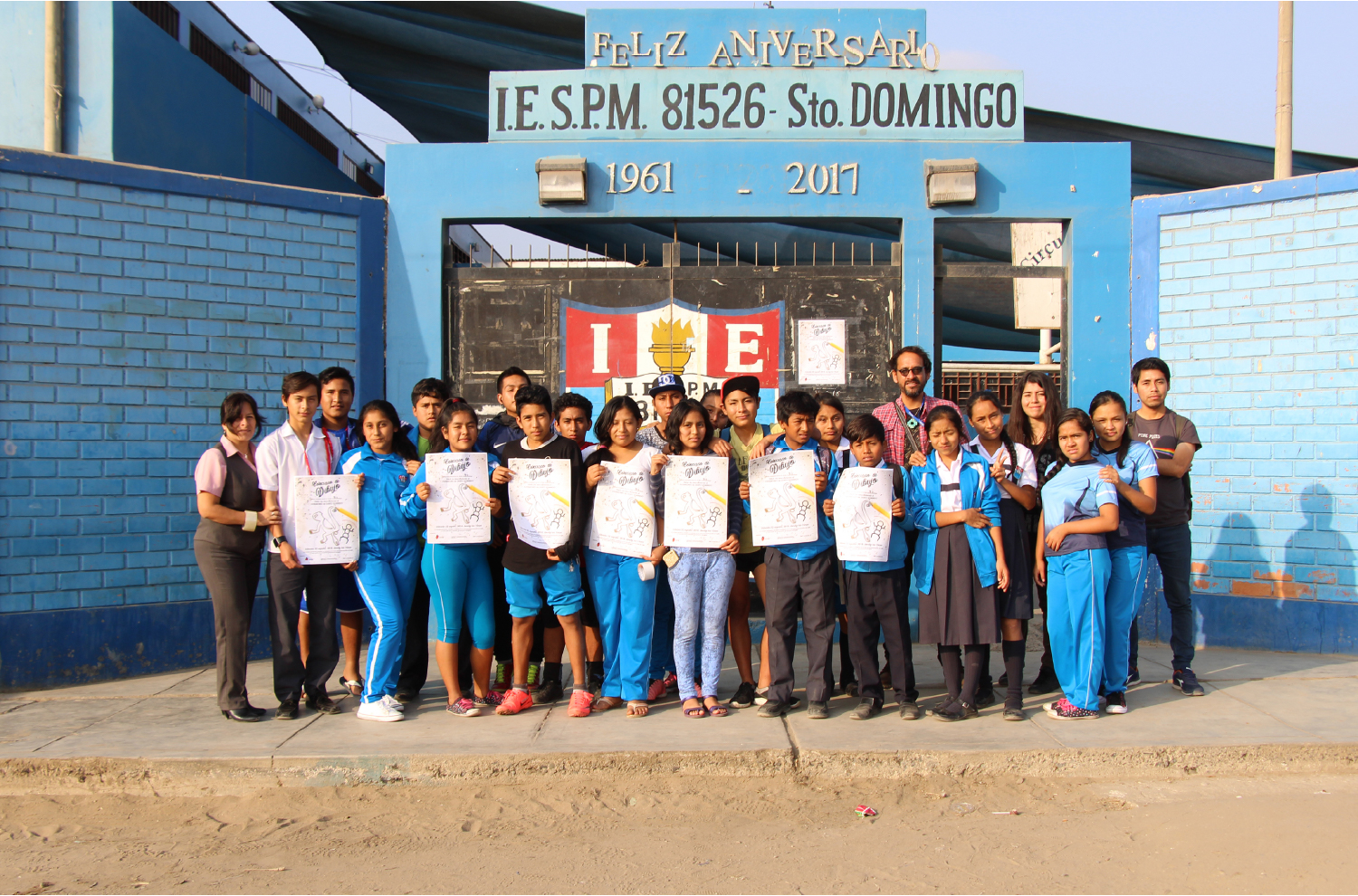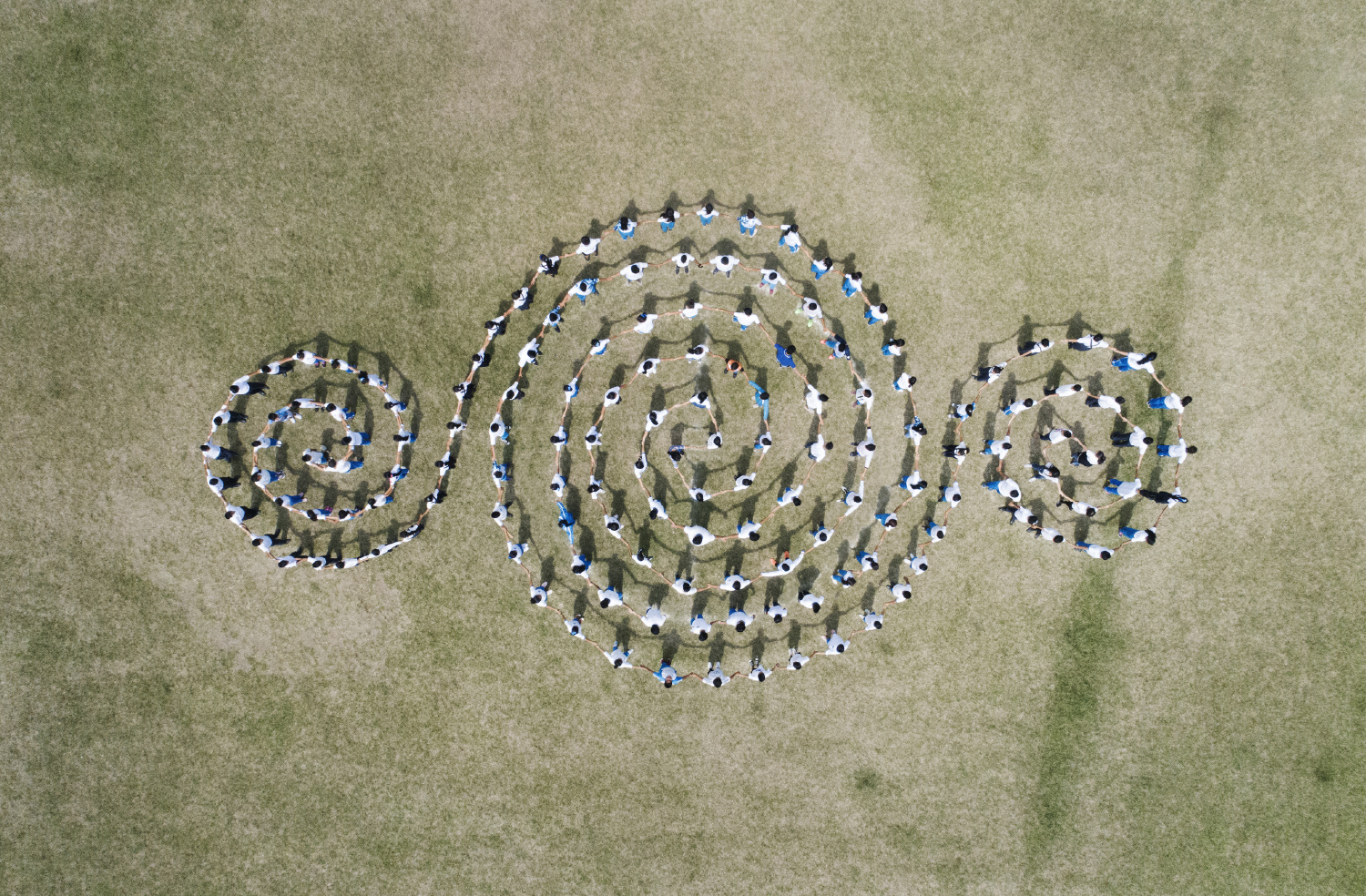New Pedagogies: Art Practices and Citizen Activism in Peru
10/03/2022
by Víctor Vich
These three projects are signs of how much the school can learn from citizen activism. It is a matter of pedagogical innovation from the art practices and especially from the struggles that are being waged today to redefine democracy [...] with new images of history and with the cultural diversity of all its people.
How can the school bring together local artists, community cultural groups, and social activism? In many cases, innovation in terms of contents and pedagogies for the classroom does not come from specialized sectors but from art practices or citizen activism. This article reviews three initiatives developed in Peru that have proposed new ways of approaching history, our relationship with heritage, and linguistic diversity. All three intend to promote a deeper involvement between the school and various art collectives that have developed meaningful interventions in the present.
Violence, Memory, and the Historical Narrative
How to teach recent history at school? How can we reflect on political violence beyond stereotypes, grudges, political interests, and silences? Designed by Verónica Zela, Archivo personalizable: Violencia política reciente / Perú [Customizable Archive: Recent Political Violence / Peru] emerges as one of the most interesting memory interventions produced in Peru today. It is a pedagogical tool to promote the construction of new narratives to overcome the countless gaps in the official discourse.
The archive consists of a set of images and documents retrieved from the period of political violence in Peru (1980-2000). Most of them are journalistic news that appeared in newspapers, but certain fragments of novels, verses from Peruvian poetry, and some testimonial stories were also selected. Numerous copies of each of these documents were printed and about 500 pads with news were prepared. These were hung on the walls of a hall at the Casa de la Literatura Peruana [House of Peruvian Literature] and displayed as a large graphic installation. The selection sought to cover a wide range of topics and offer different enunciative positions to activate a more open interaction.


The project invited students to select the news that seemed more striking to them in order to build a personal account of what those years were like. Each of these news items questioned the visitor, either because of their historical relevance, their unknown condition, or because of an emotional or ideological trigger. No more than 20 news items were to be selected. Then, everybody had to sit at a table to sort the material and build their own narrative. Once this task was completed, in a kind of plenary session, each person had to explain their selection, stating the logic and interests behind it.
In this proposal, the students must be protagonists of their own stories. Far more than spectators, they become historians: "If I don't narrate, I don't feel responsible, I don't get involved, I don't feel indebted to the future. If I narrate, I begin to engage," the creator of the project explained to me when I interviewed her.
The most important aspect of this dynamic, however, is not the production of a personal narrative but the dialogue between our selection and the narratives of others to observe and question blanks and biases.
That is to say, if each narrative implies the construction of a personal position, the collective sharing is decisive because all the personal accounts can be critically observed in this way, noticing what one has left out in the selection. It is a matter, then, of assuming history as a place to confront differentiated narratives and to relativize our own, in order to broaden and enrich it.
Ultimately, the aim is to highlight the impossibility of a self-sufficient faultless version.
Many scholars, such as Jameson, have argued that we live in a time that fosters the crisis of historicity. Today, we citizens are only exposed to fragments of history, and we no longer have the capacity to unify them within a new narrative. This project intends to neutralize the existing disorientation in the face of the past. Beyond the particularism of personal accounts, the archive promotes the construction of a more dialogic narrative, one filled with a new meaning.
Taking Care of Heritage
Heritage is the (tangible or intangible) sign of a shared history. Its presence allows unifying human groups by marking a tradition and revealing connections between the present and the past. This project arose as a reaction to the outrageous destruction of the ancient geoglyphs at the Quebrada Santo Domingo archaeological site in Trujillo, Peru. It is a remarkable place where the ancient inhabitants drew various figures on the soil, similar to those of the famous Nazca pampas. A message to the gods? A type of writing addressed to them? There are few studies on the matter, but the geoglyphs are dated between 1200 and 1500 A.D. and identified as belonging to the Gallinazo, Cupisnique, and Chimú cultures.
However, the site has been constantly invaded by land traffickers and real estate projects. The destruction of the Triple Spiral happened on April 11, 2015, and was perpetrated with a tractor. The invaders knew of its archaeological value but did not mind destroying it. It was an intentional act, but all the more serious was the fact that the Peruvian Ministry of Culture, despite having been notified, did not take the necessary measures to protect it.
The Intangible project emerged as an initiative to restore the presence of this geoglyph in the collective imagination of the region. The interventions involve redrawing or projecting it in public spaces to draw attention to the loss of a shared history. So far, the image has been projected onto the offices of the Ministry of Culture, the façades of the Superior Court of Justice and the Municipality of the town of Santo Domingo, among many other places.
However, the most relevant intervention took place in school of the town—the Educational Institution 81526—where many activities have been carried out: archaeological talks, film projections, photographic exhibitions, several field trips, museum visits and workshops with the students, a much-celebrated drawing contest and, most significatively, the human reconstruction of the Triple Spiral with participation from 160 schoolchildren, all full of emotion.

These actions state that communities should take ownership of their local history, turning it into an axis of identity and development. They are political and aesthetic interventions that insist on expanding the energy of this ancestral figure in many directions. They aim to establish contact with this cultural mark in order to stubbornly imprint it into our present.


Linguistic Diversity
Some 47 languages are believed to be spoken in Peru (4 in the Andes and 43 in the Amazon), but most of the population has never heard many of them spoken and do not know their names. It is estimated that around four million people speak a native language, but Quechua, Aymara, Ashaninka, or Shipibo (which are the languages that shape much of the country's history) are not easily heard outside of rural contexts. According to the Ministry of Culture, 21 languages are currently in extreme danger of disappearing.
I will insist on stressing that languages are the foremost element of a community's identity. They are a tool for building democratic and pluricultural states. What projects are promoting linguistic diversity, then? Modern Peru was born with a structural flaw and, after almost 200 years of republican life, few measures have been taken to neutralize it. Spanish continues to be the language of power and, despite very small advances, the policies to promote the use of native languages in public spaces are almost inexistent.
However, today we notice that several initiatives have emerged in civil society to defend languages by promoting them, changing their representations, and building new practices that make use of them. For example, the rise of Quechua in several music genres is remarkable. The Quechua rock band Uchpa began to attract attention three decades ago; currently, Liberato Kani’s hip-hop in Quechua circulates widely on social networks. Also noteworthy are the Andean lyrics of Silvia Falcón, the songs of Renata Flores, and bands such as Chintatá.

On the other hand, the Quechua para Todos [Quechua for All] collective has an online platform with virtual content and a Facebook page where they promote their classes and activities. So far, this group has taught Quechua in municipalities in several districts and public universities. Urban youths, children of migrants, as well as older people who know the language but are looking to remember it, usually enroll in these courses. In the classes, the presence of grandparents with grandchildren is notable in the context of a need to rekindle an emotional bond that was lost when the use of the language was "blocked" in intergenerational transmission.
All these initiatives reaffirm that Quechua is a language like any other and nothing should be alien to it. They all deconstruct the boundaries between rural and urban areas, between indigenous and urban, between the local and the global, and between needs and rights. This is a key point made by many studies such as Zavala's in Peru: language policy is not just about fighting for language in abstraction, as there is a risk of turning it into a fetishized object. These activists are well aware that the revitalization of language must be articulated with the fight against racism, the struggle for gender parity, and the indigenous communities’ defense of their territories in the face of expropriations.
The linguistic policies that achieve real positive effects are those structured with non-linguistic struggles that respond to the daily lives of the speakers. What is the school doing to expand the knowledge of the linguistic diversity of our countries? What is it doing to bring the study of excluded languages together with the reflection on the rights of indigenous communities?
These three projects are signs of how much the school can learn from citizen activism. It is a matter of pedagogical innovation from the art practices and especially from the struggles that are being waged today to redefine democracy, that is, to turn it into a true system that connects citizens' rights with new images of history and with the cultural diversity of all its people.

